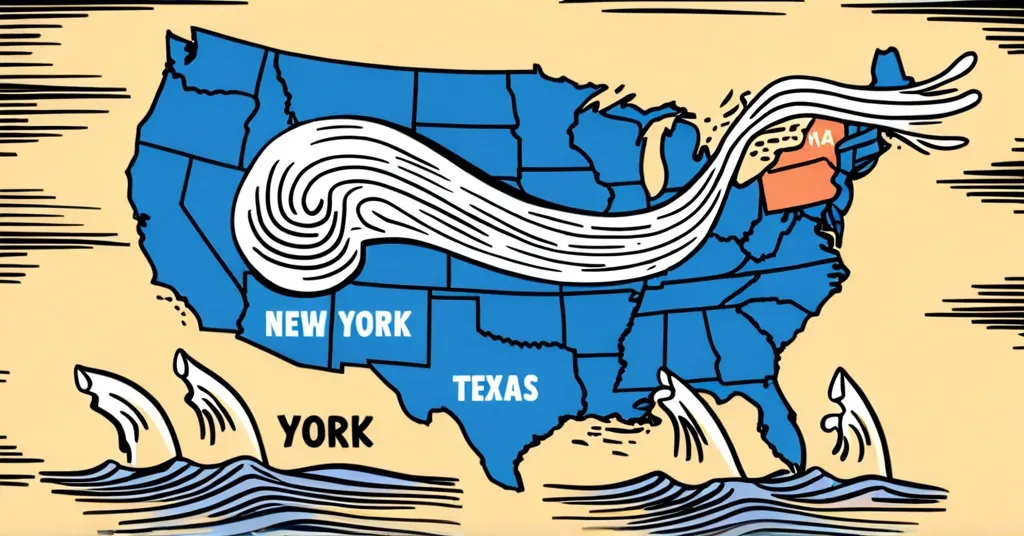Ripple Secures MTLs in NY and TX, Boosts Cross-Border Payments Amid SEC Legal Battle

Ripple Bolsters U.S. Presence with New Licenses in New York and Texas
Ripple, a trailblazer in blockchain payment solutions, has secured Money Transmitter Licenses (MTLs, which allow companies to legally facilitate money transfers within or across state lines) in New York and Texas. This move adds to their tally of over 55 MTLs across the U.S., enabling more efficient cross-border payment solutions amidst ongoing regulatory challenges, including a legal battle with the SEC over the status of its XRP token.
- Ripple secures MTLs in NY and TX, now holding over 55 nationwide.
- Expansion facilitates enhanced cross-border payments.
- Faces ongoing SEC lawsuit over XRP’s security status.
- Global expansion with licenses in Singapore, Ireland, and Dubai.
- XRP trades at $3, with gains but not at record highs.
These new licenses aren’t just about ticking regulatory boxes; they’re a green light for Ripple to turbocharge its cross-border payment offerings. Joanie Xie, Ripple’s Managing Director of North America, made this clear:
With years of experience working in both crypto and with financial institutions, Ripple is well-positioned to support companies that are ready to take advantage of the current landscape.
But it’s not all smooth sailing. The SEC’s lawsuit looms large, questioning whether XRP should be classified as a security. However, a recent court ruling has provided a glimmer of hope: XRP offerings to retail customers are legitimate. This nuanced decision suggests Ripple might just navigate these choppy regulatory waters, bolstered by a more crypto-friendly environment under the Trump administration and a ramp-up in U.S.-based hiring, with 75% of open positions now domestic.
Ripple’s global ambitions are just as impressive. They’ve secured licenses in key markets like Singapore, where they hold a Major Payment Institution License, and in-principal licenses in Ireland, the Cayman Islands, and Dubai. This international expansion isn’t just about planting flags but about building a robust network for global financial transactions.
On the market front, XRP is trading at $3, with significant monthly and year-to-date gains of 40% and 470%, respectively. While it hasn’t broken its record high of $3.40 set over seven years ago, the trajectory is promising. Ripple’s On-Demand Liquidity (ODL) platform has facilitated about $70 billion in payment volume on its blockchain ledger (a digital record of transactions stored on a blockchain, ensuring transparency and security), and their North American customer base has doubled in the past year.
In a strategic move into institutional DeFi (Decentralized Finance, where financial products are available on a public blockchain), Ripple has partnered with Ondo Finance to integrate their $185 million U.S. Treasury-backed token (OUSG) with the XRP Ledger. This initiative aims to enhance the ledger’s role in handling tokenized assets, a sector that’s seen a quadrupling in value to $3.5 billion over the past year. Markus Infanger, RippleX’s Senior VP, emphasized the transformative potential of such assets:
The integration of OUSG with the XRP Ledger unlocks new possibilities for capital flow management.
Ripple’s commitment extends beyond business, as demonstrated by their $100,000 XRP donation to support wildfire relief efforts in California. This philanthropy highlights their dedication to social responsibility, showing that they’re not just about profits but also about making a positive impact.
Yet, the debate over the XRP Ledger’s decentralization continues to rage. Critics like Pierre Rochard argue that Ripple’s influence undermines claims of true decentralization. However, Ripple’s CTO, David Schwartz, counters this by highlighting the consensus algorithm and the role of independent validators. This tug-of-war over decentralization is crucial to understanding Ripple’s place in the broader crypto ecosystem, especially when compared to Bitcoin’s staunchly decentralized model.
Ripple’s journey is emblematic of the crypto industry’s broader challenges and opportunities. From securing MTLs to navigating legal battles and expanding globally, Ripple is striving to reshape the future of finance. Yet, it remains to be seen whether they can fully embrace the principles of decentralization and privacy that are at the heart of the crypto revolution, or if they’ll continue to exist as a centralized entity within a decentralized space.
Key Takeaways and Questions
- What are Money Transmitter Licenses?
Money Transmitter Licenses are regulatory approvals granted by state authorities, enabling companies like Ripple to legally facilitate money transfers within or across state lines.
- How do these new licenses benefit Ripple?
The licenses in New York and Texas enhance Ripple’s ability to offer more efficient cross-border payment solutions, strengthening its market position in the U.S.
- What challenges does Ripple face in the U.S.?
Ripple faces significant regulatory hurdles, primarily due to its ongoing legal battle with the SEC over whether XRP should be classified as a security.
- How is Ripple expanding globally?
Ripple has secured various international licenses, including a Major Payment Institution License in Singapore, and in-principal licenses in Ireland, the Cayman Islands, and Dubai, showcasing its global ambition.
- What is the current status of XRP?
XRP is trading at $3, with impressive gains over the past month and year, though it has not yet surpassed its record high of $3.40 set over seven years ago.
- How is Ripple responding to the U.S. regulatory environment?
Ripple is increasing its domestic presence through hiring and benefiting from a more favorable regulatory climate under the Trump administration, which appointed crypto-friendly regulators.



